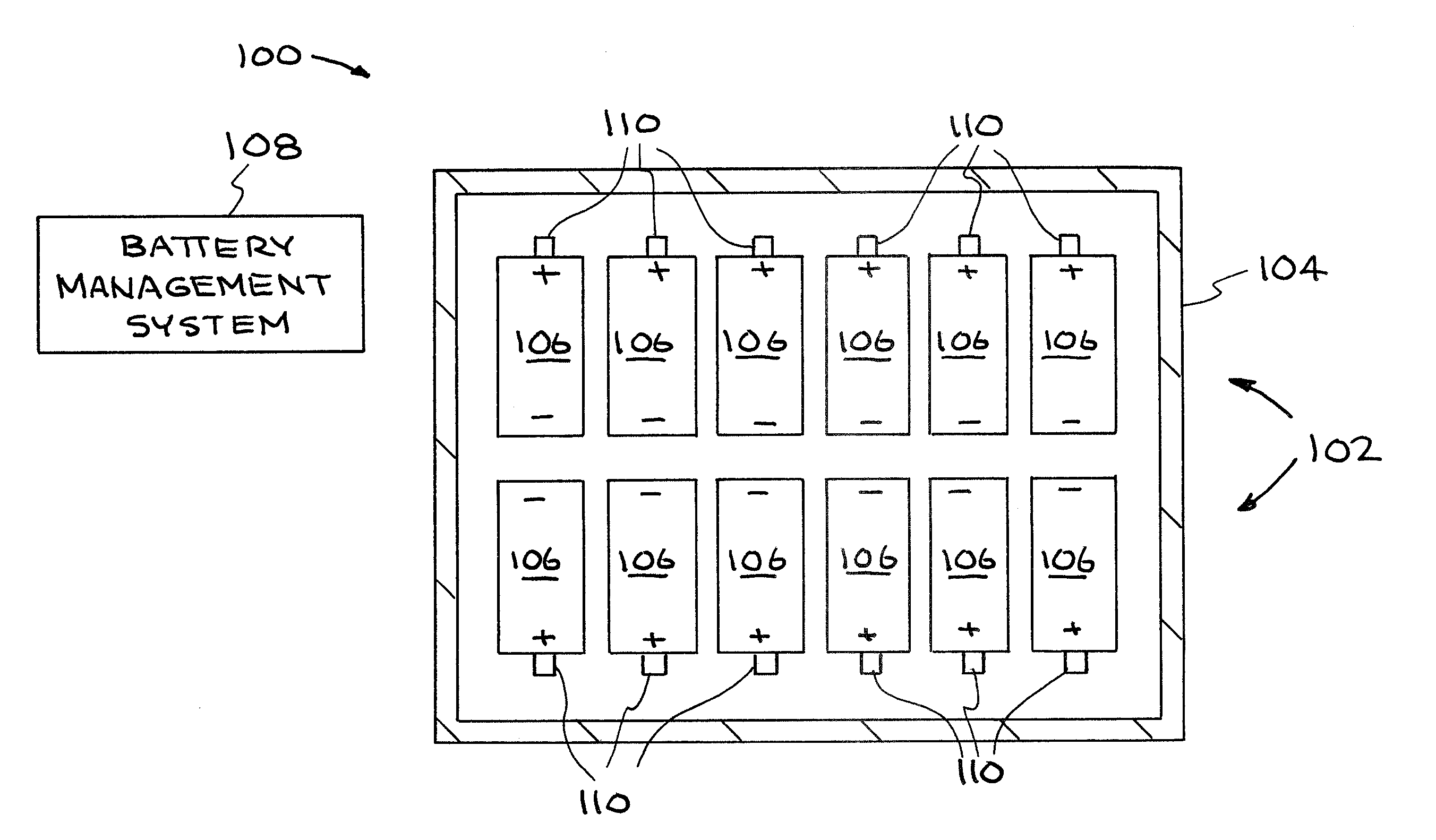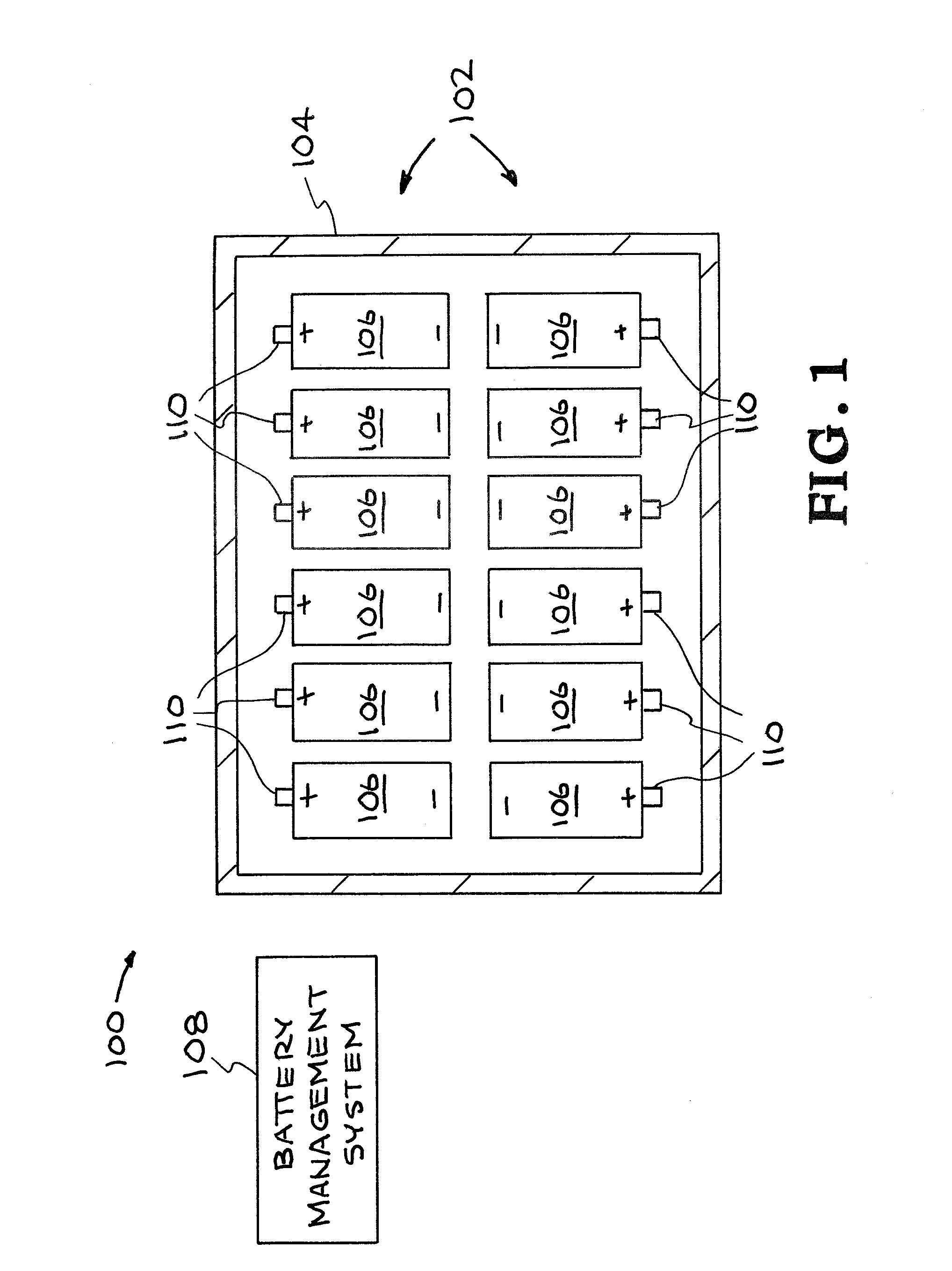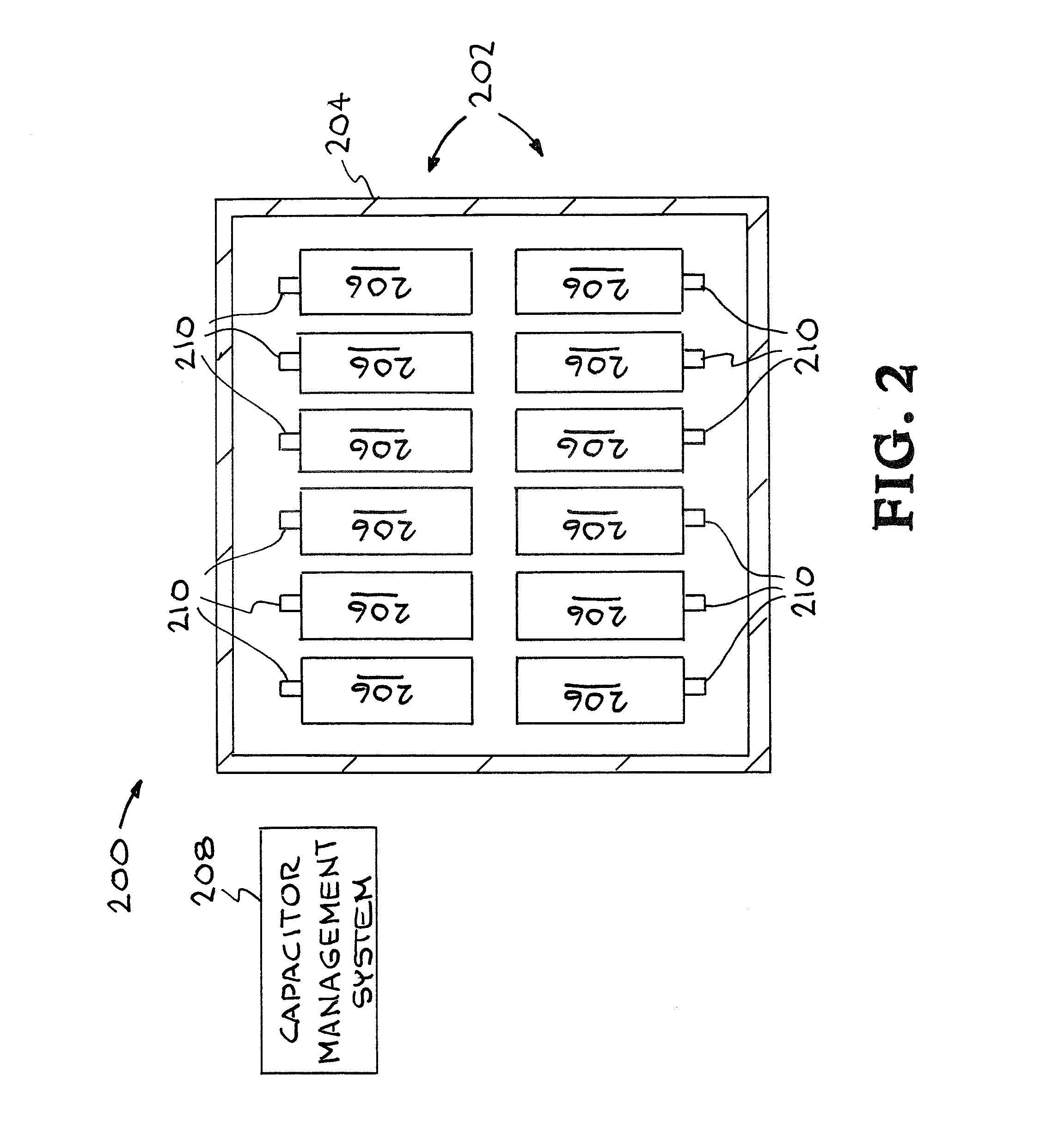Battery management system with distributed wireless sensors
a wireless sensor and battery management technology, applied in the direction of material heat development, optical radiation measurement, instruments, etc., can solve the problems of large storage of energy, overcharging or overcharging, overcharging, and overcharging, etc., to achieve the effect of heating adjacent cells, storing large amounts of energy, and reducing the number of cells
- Summary
- Abstract
- Description
- Claims
- Application Information
AI Technical Summary
Benefits of technology
Problems solved by technology
Method used
Image
Examples
Embodiment Construction
[0045]Referring to the drawings, to the following detailed description, and to incorporated materials, detailed information about the invention is provided including the description of specific embodiments. The detailed description serves to explain the principles of the invention. The invention is susceptible to modifications and alternative forms. The invention is not limited to the particular forms disclosed. The invention covers all modifications, equivalents, and alternatives falling within the spirit and scope of the invention as defined by the claims.
[0046]There is a need for an advanced management system for energy storage devices. There is also a need for a battery management system that will provide detailed information about conditions in the individual cells of a battery and that will report and provide documentation of the detailed information about conditions in the individual cells of a battery. For example, lithium ion batteries have been plagued by a history of sign...
PUM
| Property | Measurement | Unit |
|---|---|---|
| frequency | aaaaa | aaaaa |
| energy density | aaaaa | aaaaa |
| specific energy | aaaaa | aaaaa |
Abstract
Description
Claims
Application Information
 Login to View More
Login to View More - R&D
- Intellectual Property
- Life Sciences
- Materials
- Tech Scout
- Unparalleled Data Quality
- Higher Quality Content
- 60% Fewer Hallucinations
Browse by: Latest US Patents, China's latest patents, Technical Efficacy Thesaurus, Application Domain, Technology Topic, Popular Technical Reports.
© 2025 PatSnap. All rights reserved.Legal|Privacy policy|Modern Slavery Act Transparency Statement|Sitemap|About US| Contact US: help@patsnap.com



